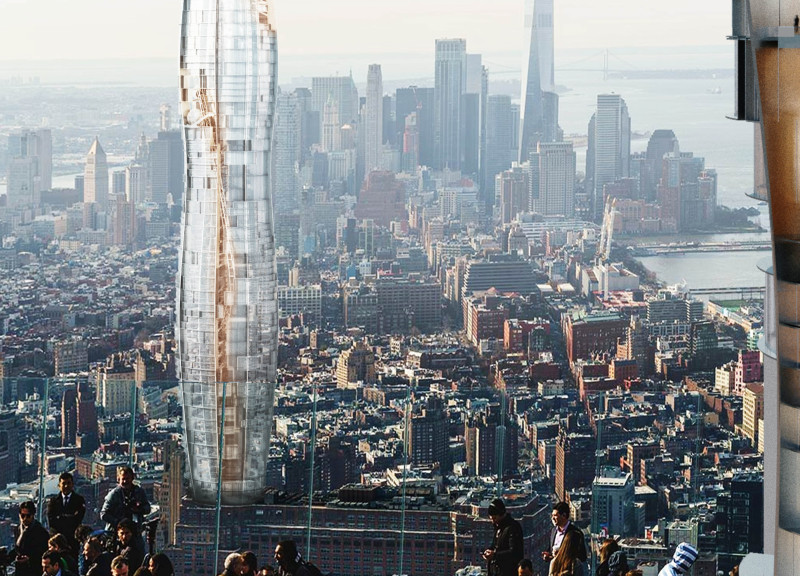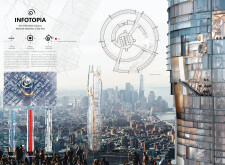5 key facts about this project
INFOTOPIA is located in New York City and aims to address the challenges of traditional high-rise living. The design revolves around encouraging social interaction among residents while providing various lifestyle experiences. By changing how individuals connect in an urban setting, it rethinks the typical high-rise layout, which can often feel isolating.
Spiral Plane Integration
The design features a spiral plane within the tall structure, which is an important part of how people move through the building. This spiral allows residents to navigate across multiple levels in a new way, promoting a sense of community. By facilitating movement, the design invites occupants to explore and engage with one another in shared spaces.
Enhanced Tenant Interaction
Another notable feature is the "co" shaped path on the building's facade. This element helps create opportunities for residents to interact. By breaking away from a straight path, it encourages people to come together in communal areas. This design strategy focuses on enhancing relationships, making it easier for residents to connect.
Sensory Engagement in Urban Living
In addition to promoting interaction, the overall strategy prioritizes user perception. The layout allows for an engaging experience where individuals can easily move between private and communal spaces. This balance ensures that residents can find both solitude and social opportunities, ultimately improving their quality of life.
Visual Connection to the Urban Environment
Although specific materials are not mentioned in the presentation text, the design suggests a focus on transparency. This might include the use of glass and lightweight materials. Such choices would support a visible connection between the inner spaces and the lively city outside, strengthening the relationship between residents and their urban surroundings.



















































